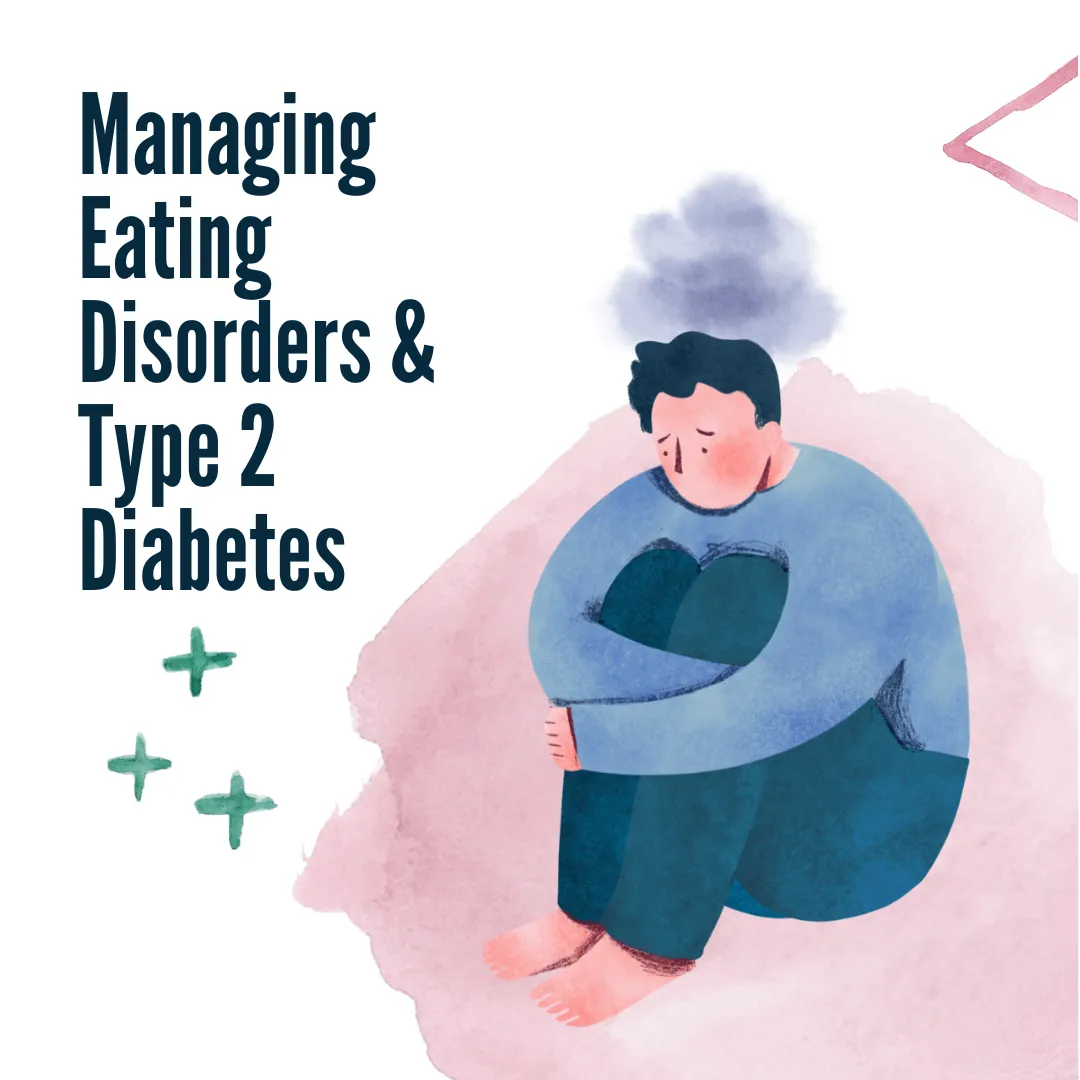
Eating Disorders and Type 2 Diabetes
“Ever since that moment, I struggled with enjoying my food since I thought no matter what I ate, it would cause me to gain weight, cause my blood sugars to skyrocket, and perpetuate the "unhealthiness."" - Patrick Luo, SPT, PN1-NC, One80
Introduction:
Warning. This blog contains sensitive information in regards to eating disorders, mental health difficulties, and potentially other triggering material. If you experience any difficulty reading this, please know you are not along and help is available. Please reach out to loved ones and/or professional help as needed!
I'm going to share my personal journey with disordered eating and managing my prediabetes. I'll share the lessons I learned that's helped my clients improve their mental, emotion, and physical health. It's helped them so much that they cannot help to refer their friends or families to work with the Diabetes Management Group.
When I did wrestling in high school, I weighted 155 lbs and about 10% body fat. I needed to make regional weigh-ins so I cut out eating everything except for unseasoned vegetables and a chicken breast. I only sipped water once in a while and within 3 weeks, I lost about 12 lbs. I felt tired, horrible, and sick. But during winter break, when I saw my family eat these coconut macaroons, I couldn't hold it in anymore...

I ate one coconut macaroon and it tasted amazing and sweet with a crispy exterior with warm interior. I felt good inside for a split second, but it was immediately followed with disgust, terror, and anger. I was disappointed I broke my diet and I immediately spat out the coconut macaroon and washed the sweetness from my mouth. Ever since that moment, I struggled with enjoying my food since I thought no matter what I ate, it would cause me to gain weight, cause my blood sugars to skyrocket, and perpetuate the "unhealthiness." Fast forward to after I was done with wrestling, I could no longer eat coconuts the same since I would immediately be reminded of that moment. I could hear the negative self-talk calling myself a piece of sh** and a gluttonous pig. I could feel the shame, negativity, and embarrassment. I could see how insecure I was about what to eat and when I felt really bad, I would just keep eating food with mixed feelings of enjoying the food, but feeling like a complete failure. So I avoided coconuts and was able to enjoy food again.
Fast forward again to when I started my first semester of my Doctor of Physical Therapy program, I was diagnosed with prediabetes. All of the disordered eating symptoms I had came flooding back into my head. I could no longer enjoy my favorite ice cream, eating rice, and anything with carbohydrates. I thought I needed to completely eliminate carbs because sugars were the problem based off the social medial posts I've seen. After "succeeding," "failing," and putting this on repeat, I took a step back to focus on the science.
"What is the root cause of Type 2 Diabetes?" I had a feeling that high blood sugars was a symptom. I knew it was important to still have sugars because that is the primary fuel source for our muscles, brain, and organ to function. Not to mention the cultural importance of carbs for the traditional foods I love like BBQ pork buns, egg custard, rice cakes, and more! So after understanding how the body utilizes blood sugars, I learned the blood sugars is not the issue. It's the insulin resistance caused by excess stress, lack of QUALITY sleep, and a caloric imbalance. I learned it's very similar to an inefficient car. We don't blame the gas for our car not being fuel efficient. Instead, we look internally in the car to see why it is not efficient enough. After detecting the root cause of it, it can be addressed then reversed. So I decide to experiment with this.
By increasing the amount of fiber and protein I eat with sugars, then going for a walk after eating or drinking calories, I found out my blood sugars stayed on-point. I started adding other sweets like cookies, donuts, and ice cream too and these same steps also improve my blood sugar levels in the long run. So much so, my A1c scores still went down despite going against the "social medial influencers" saying sugar is the major driving cause for obesity and Type 2 Diabetes. That's when I realized there is no such thing as a good food or bad food. Instead, food is just food with different nutritional characteristics. Fiber helps with slowing down the digestion process. Protein also helps with slowing down the digestion process and repairs muscles. And activating the muscles to lower blood sugars with walks, exercising, or moving in general.
Of course, sleep has also played a huge role in improving my blood sugar control too. Afterall, sleep allows the body to filter out the stress and repairs the body. Without proper sleep, the body is stressed further to the point where it is hard to manage insulin sensitivity and blood sugar control throughout the day. I installed black out curtains and it helped a lot with sleeping better AND helped my electricity bill.
In addition to all of this, I decided to see a therapist. This helped me understand my emotional scars and let go of the pain so I can relearn how to have a positive habits with foods. The negative self talks started to transform into encouraging self talks. When I eat a sweet treat again, I am able to savor it and maintain a positive mood. I understand it will raise my blood sugars and that's okay because I know when I eat more fiber and protein with the sweet treat then go for a walk afterwards, I'm able to have the food I want with blood sugars that are in ranges. Then it lead to a drop in my A1c scores too! So overall, here are 3 other tips that I found helpful in helping me with my journey in improving my relationship with food, feeling full, and keeping my prediabetes reversed!
Tip 1: Establish a Balanced Meal Plan
Maintaining a balanced and consistent meal plan is a cornerstone for managing type 2 diabetes and eating disorder symptoms. I encourage people to work with a registered dietitian who is a certified diabetes care and education specialist (CDE or CDCES) who can help create a personalized plan. This plan should address both your nutritional needs and any specific concerns related to your eating habits. Consider incorporating smaller, more frequent meals to stabilize blood sugar levels.
Tip 2: Seek Professional Support
Managing the intersection of an eating disorder and type 2 diabetes requires a holistic approach. Reach out to healthcare professionals such as therapists, counselors, and dietitians who specialize in both areas. Their expertise can provide personalized guidance and support to address the emotional and physical aspects of your health.
Tip 3: Practice Mindful Eating
Mindful eating involves being present during meals, savoring each bite, and paying attention to your body's hunger and fullness cues without judgment. Practicing mindful eating can help build a healthier relationship with food and reduce the likelihood of engaging in disordered eating behaviors.
Bonus Tip: Stay Hydrated
Proper hydration is crucial for overall health and can significantly impact diabetes management and eating disorder recovery. Drinking an adequate amount of water throughout the day helps regulate blood sugar levels, improves digestion, and supports overall well-being.
Other resources to help you improve relationship with foods.
Review the continued disclaimers here: https://www.diabetesmanagementgroup.org/legalpage
Call or Text:
(307) 288-3440
Email:
pluo@diabetesmanagementgroup.org
Website:
www.diabetesmanagementgroup.org






